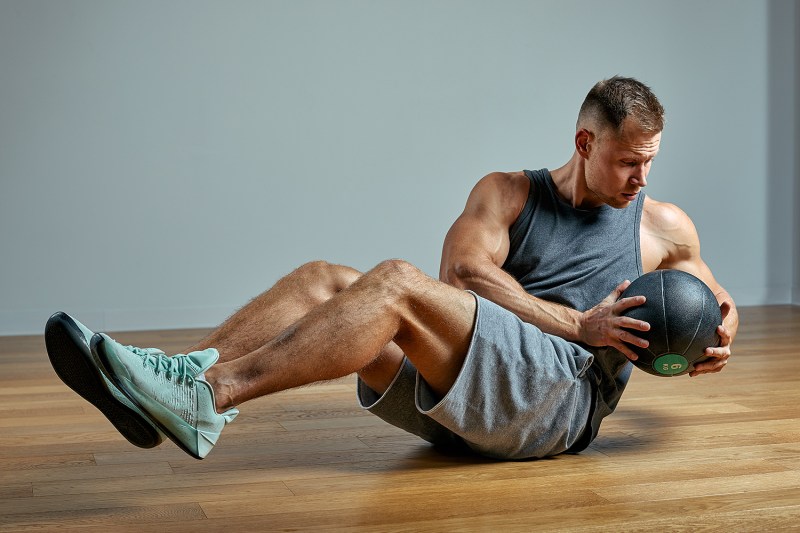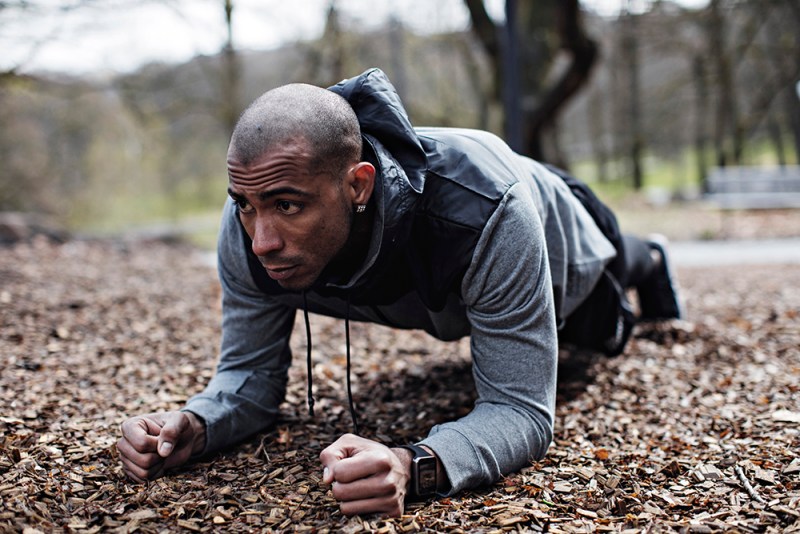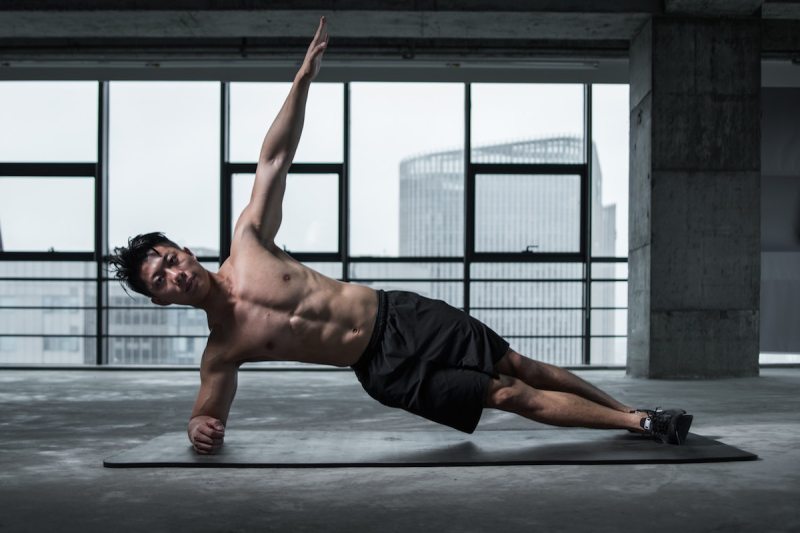
There is nothing more rewarding than being able to look in the mirror and see that nice six-pack that is a result of all your hard work. Getting defined abs is a difficult task on its own, but it becomes even harder if you have diastasis recti. Diastasis recti in men is fairly common, but most conversation surrounding the topic is focused on women during the postpartum period. However, diastasis recti can affect both men and women and certainly doesn’t need to be preceded by pregnancy.
Diastasis recti refers to a longitudinal separation of the abdominal muscles. This condition is often considered to be only troublesome from a cosmetic standpoint. Still, there can also be functional consequences because the integrity of your core as a unit is compromised.
The good news is that there are some easy diastasis recti exercises for men that can help reduce the symptoms and discomfort of unsupported abdominal muscles, improve the appearance of your abs, and strengthen your core while helping prevent further separation of your abs. So, if you’re suffering from diastasis recti, or wondering if you might be, keep reading for a quick introduction to diastasis recti and a detailed rehab workout program with the best diastasis recti exercises for men.

What is diastasis recti?
Diastasis recti is a separation between the right and left sides of the rectus abdominis muscles (your “six-pack” muscles) that run down the front of the trunk. Diastasis recti results in a gap that runs vertically down the center of your abdomen. It is caused by excess pressure exerted on the abdominal muscles and a stretching and thinning of the linea alba, which is the connective tissue that joins the right and left columns of the rectus abdominis.
Diastasis recti is more common as a result of pregnancy or obesity, though people with connective tissue disorders may also develop diastasis recti. The abdominal separation associated with diastasis recti results in unsupported abdominal muscles, which can cause difficulties with certain movements, poor posture, lower back pain, hip pain, and athletic and sexual performance consequences.

The best diastasis recti exercises for men
The goal of diastasis recti for men is to encourage tissue healing and strengthen the core while reducing the risk of exacerbation of the condition. Diastasis recti exercises for men, such as planks and other abdominal bracing exercises, strengthen the core and have been shown to reduce the associated abdominal separation. Though it’s advisable to speak to your doctor or physical therapist before starting exercises for diastasis recti for men, below we share the best exercises for diastasis recti to help you get started healing your abs and strengthening your core.
Blowing out candles
This is a simple core engagement exercise that trains the core to tighten and draw inwards when engaged. When the linea alba is torn with diastasis recti, the core loses its integrity as a continuous, encircling band of connected muscles around the trunk. This diastasis recti exercise aims to retrain the engagement of the abs in their inward, constricting motion.
Equipment: None
Execution:
- Sit or stand tall with good posture.
- Inhale deeply, allowing your belly to expand.
- Exhale fully and slowly, as if blowing out 100 birthday candles in a single breath, being sure to tighten your core for the entire duration of the breath while drawing your belly inward as much as possible.
- Try to draw out the exhale for as long as you can, and envision bringing your belly button all the way to your spine. Note, however, that you aren’t holding your breath; you’re just extending the time you exhale.
Tummy tucks
This diastasis recti exercise can be completed anywhere and anytime throughout the day, so it’s an easy way to start rebuilding core strength without having to roll out a yoga mat and perform a dedicated set of core exercises.
Equipment: None
Execution:
- Stand such that your body is hinged at the hips and your trunk is parallel to the ground. You can hold onto a desk, counter, chair, etc., for balance or even get down on all fours (hands and knees) if that’s more comfortable for you.
- Relax your abs and let your loose belly hang down as far as it can.
- Draw it in as hard as you can, bringing your belly button toward your spine.
- Hold for 5-10 seconds.
- Relax and let your belly drop back down.
- Repeat 20-30 times.
Heel slides
Heel slides are a simple diastasis recti exercise for beginners. The key is to move as slowly and in as controlled a manner as possible.
Equipment: None
Execution:
- Lie on your back on a mat or towel positioned on a bare floor (no rug), wearing socks to facilitate sliding.
- Bend your knees to 90 degrees and place your feet flat on the floor.
- Inhale, draw your belly button to your spine, then exhale as you slowly slide one foot away from your butt until the leg is extended straight.
- Draw the leg back in toward your butt until the knee is bent to 90 degrees again. Be sure to keep your abs engaged and your belly button drawn into your spine.
- Switch legs.
- Complete 30 reps per leg, moving as slowly as possible.

Plank
Planks are a great abdominal bracing exercise for men with diastasis recti because they build core strength without encouraging abdominal separation.
Equipment: None
Execution:
- Get in a pushup position, except place your forearms on the ground with your elbows under your shoulders instead of weight-bearing through your hands. Make sure your body is in a straight line from your head to your heels.
- Breathe, drawing your abdomen in and pulling your belly button toward your spine.
- Gradually build up the length of the hold from 15-30 seconds initially to 2-3 minutes. Be sure to keep your belly button drawn in the whole time.
Single-leg lifts
This diastasis recti exercise challenges your abdominals to stay engaged and control the pelvis while you move one leg. Be sure to keep the abdominals drawn in throughout the entire movement and your pelvis in a neutral position.
Equipment: None
Execution:
- Lie on your back with your knees bent 90 degrees, feet flat, toes pointing straight ahead, and arms by your sides.
- Lift one foot off the floor as high as you can with control.
- Hold for one full breath, and then slowly lower your leg down and repeat on the opposite leg.
- Complete 20 reps per leg.
Marches
To strengthen your lower abs, you can try marches. Again, the focus should be on controlling the movement, moving slowly, and always drawing your belly button inward.
Equipment: None
Execution:
- Lie on your back with your hips flexed so that your thighs are perpendicular to the floor, your knees are up in the air bent to 90 degrees, and your shins are parallel to the ground up in the air.
- Place your arms by your sides.
- Draw your belly button in and engage your abs while you slowly lower one leg toward the ground, maintaining the bend in your knee.
- Gently tap your heel on the floor and then lift the leg back up to the starting position using only your core muscles.
- Switch legs, alternating sides for 40-50 reps.
Reverse crunches
After you’ve mastered marches, you can progress to reverse crunches. This exercise is very similar, but you move both legs together, which is more challenging for your abdominal muscles and requires greater core control.
Equipment: None
Execution:
- Lie on your back with your hips flexed so that your thighs are perpendicular to the floor, your knees are up in the air bent to 90 degrees, and your shins are parallel to the ground and up in the air.
- Place your arms by your sides.
- Draw your belly button in and engage your abs while you slowly lower both legs in tandem toward the ground, maintaining the bend in your knees and a tight abdomen.
- Gently tap your heels on the floor and then lift your leg back up to the starting position using only your core muscles.
- Complete 15-20 slow reps.

Side plank
This challenging core exercise is good for those with diastasis recti because it strengthens the obliques and abs without forcing the abs apart.
Equipment: None
Execution:
- Lie on your side with your elbow lined up directly under your shoulder and your feet stacked on top of one another.
- Lift your hips up until they are in line with your body. Concentrate on squeezing your core as tight as possible.
- Hold for 15-60 seconds, and then switch sides.

Glute bridge
While this exercise is primarily known for strengthening the glutes, it is also effective for stabilizing the core.
Equipment: None
Execution:
- Lie on your back with your knees bent, feet firmly planted on the floor, and arms down by your sides.
- Brace your core and glutes as you push through your heels to bring your hips up until a straight line is formed from your head to your knees.
- Pause at the top for a few seconds before slowly lowering your hips back to the floor.
- Perform 10-15 reps.
Editors' Recommendations
- 4 yoga poses to build core strength you can do anywhere
- Hot yoga, core power yoga, and more: 8 yoga variations to help you increase strength and flexibility
- 6 effective resistance band workouts to tone your triceps
- 7 incredible core exercises to lose belly fat
- 7 essential glutes exercises for runners (and 3 stretches)





